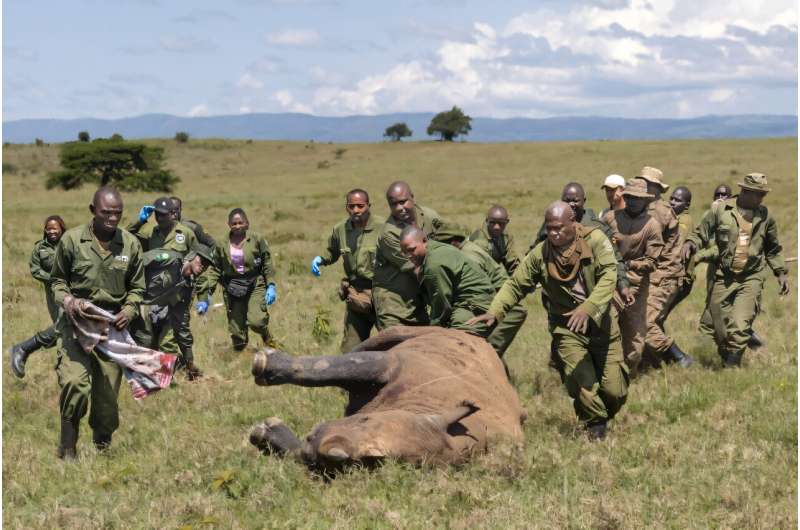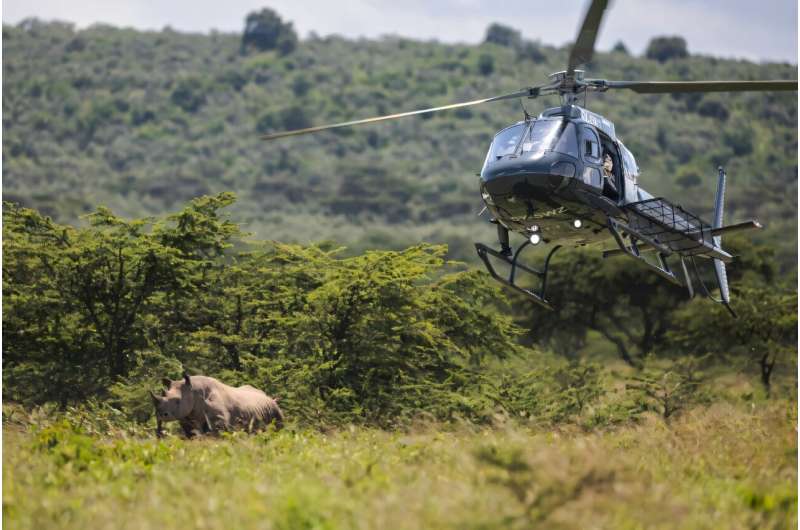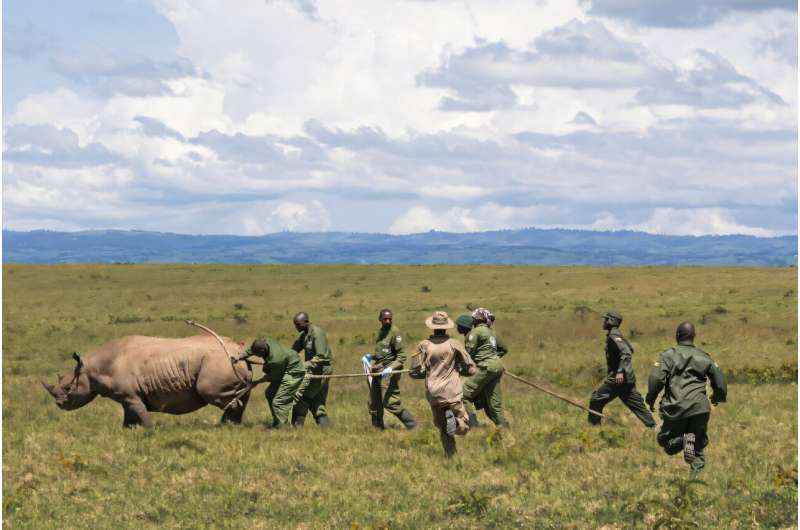Welcome to a heartwarming tale of resilience and hope as we follow a young rhinoceros on her unexpected journey. This story not only highlights the challenges faced by these magnificent creatures but also showcases the exceptional efforts of human guardianship in preserving their future.

With her heart racing, a young female rhinoceros felt the effects of a tranquilizer shot. In a bid for safety, she bolted into the shelter of a dense thicket, cleverly evading the helicopter circling above, which was manned by a skilled team determined to keep her secure.
This rhinoceros was meant to embark on a new adventure—a move to a safer park in Kenya. But this spirited creature had different plans. The quick response of the rangers, driving rugged 4x4s, brought them into the heart of the thick bushes where she had hidden away.
Realizing they had to act fast, the team decided to administer an antidote to the tranquilizer to ensure her safety. If she fell inappropriately, it could lead to suffocation. In that moment, they knew she would be staying close to her birthplace.
“Rhinos are the most challenging animals to relocate,” shared Taru Sheldrick, the helicopter pilot operating above the stunning landscapes of Nakuru National Park. This lush haven is a sanctuary surrounded by a serene blue lake.
When darting a rhino, the clock ticks rapidly. “They instinctively run toward thick bushes, their refuge. Every time we work with these creatures, there’s a little fear for their safety. They are endangered, and every single one matters,” Taru emphasized, his voice reflecting the passion and concern for the species.

Race Against Time
According to the International Rhino Foundation, only around 28,000 rhinos are left in the wild, with a significant portion residing in Africa. Kenya is home to over 2,000 of these majestic giants. To preserve genetic diversity and promote reproduction, it’s crucial to relocate rhinos to different parks.
However, the tranquilizing process requires meticulous timing. Dr. Dominic Mijele from the Kenya Wildlife Service highlighted the critical nature of the procedure, noting how the tranquilizers could dangerously affect the animals’ breathing and heart rates.
The urgency arises soon after a veterinarian administers the tranquilizer dart from a helicopter. Within five to seven minutes, the rhino starts feeling drowsy, and it’s vital that the team reaches her before she collapses. On this thrilling Saturday, after the first rhino disappeared into the bushes, three more would soon be darted within hours.

A remarkable rescue team was on-site in mere minutes after each dart was fired. Working like clockwork, around a dozen caregivers immediately surrounded the downed rhinos. They cooled their bodies with water, turned them onto their sides for better breathing, monitored vital signs, and provided oxygen.
Meanwhile, other rangers secured the animals for transport with careful precision. Just fifteen minutes after the initial immobilization, the antidote was delivered, and the rhino sprang back to alertness, ready for her next chapter.
‘Number One’
Proud of their achievements, Mijele remarked on Kenya’s stellar reputation in rhino translocation. “We’re number one in the world. We’ve successfully relocated so many rhinos,” he stated with a twinkle of pride in his eyes.

Relief washed over Jochen Zeitz, the owner of the Segera Reserve, as he celebrated the successful relocation of about 20 rhinos in recent weeks. His expansive 200 square kilometers of protected land is now home to a diversity of species, including elephants and lions. The return of rhinos—an iconic species once prevalent here—is a joyful completion of his foundation’s vision that began 22 years ago.
Due to the constant threat of poaching, security measures at Segera have been significantly bolstered with a dedicated team of 100-150 personnel. Later that evening, a small group gathered to witness the release of three rhinos into their new sanctuary after a long journey from Nakuru.
As night fell, the sound of metal grates being lifted and the rhythmic stomping of the newly arrived rhinos filled the air. Their arrival marked not just a relocation, but a hopeful resurgence of an endangered species ready to thrive once again.
© 2025 AFP
If you would like to see similar science posts like this, click here & share this article with your friends!



